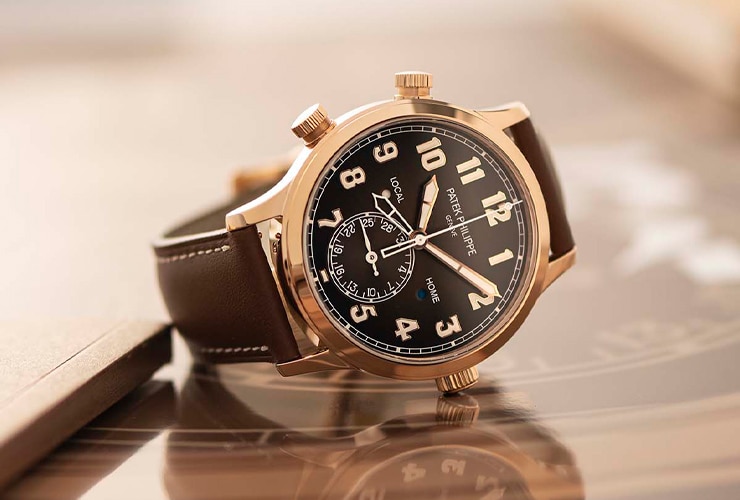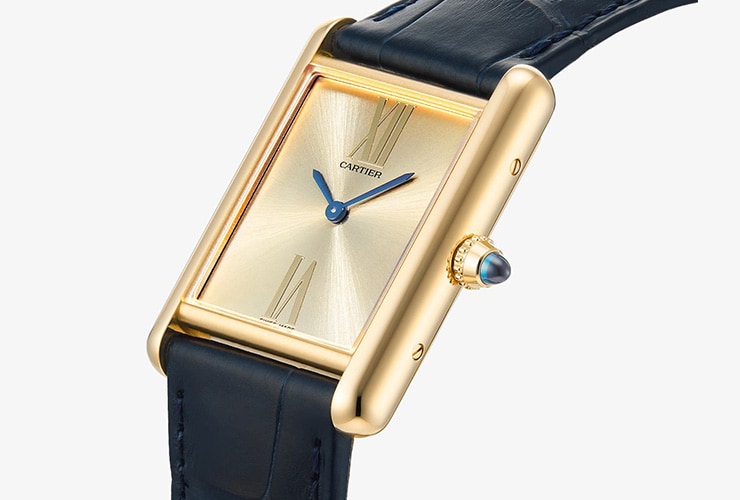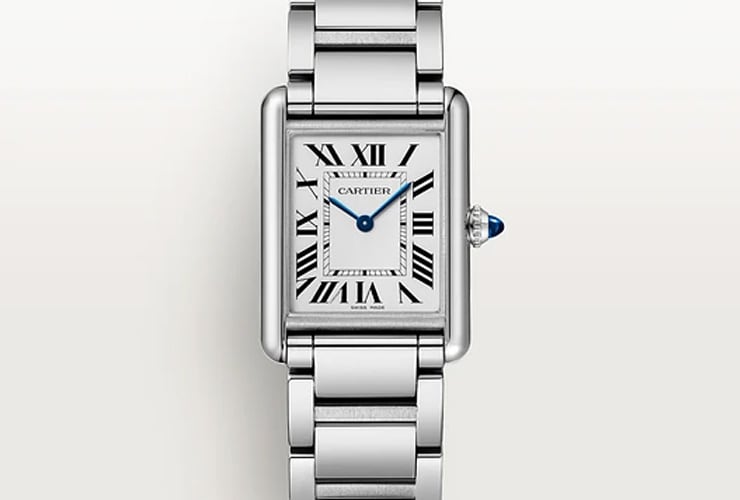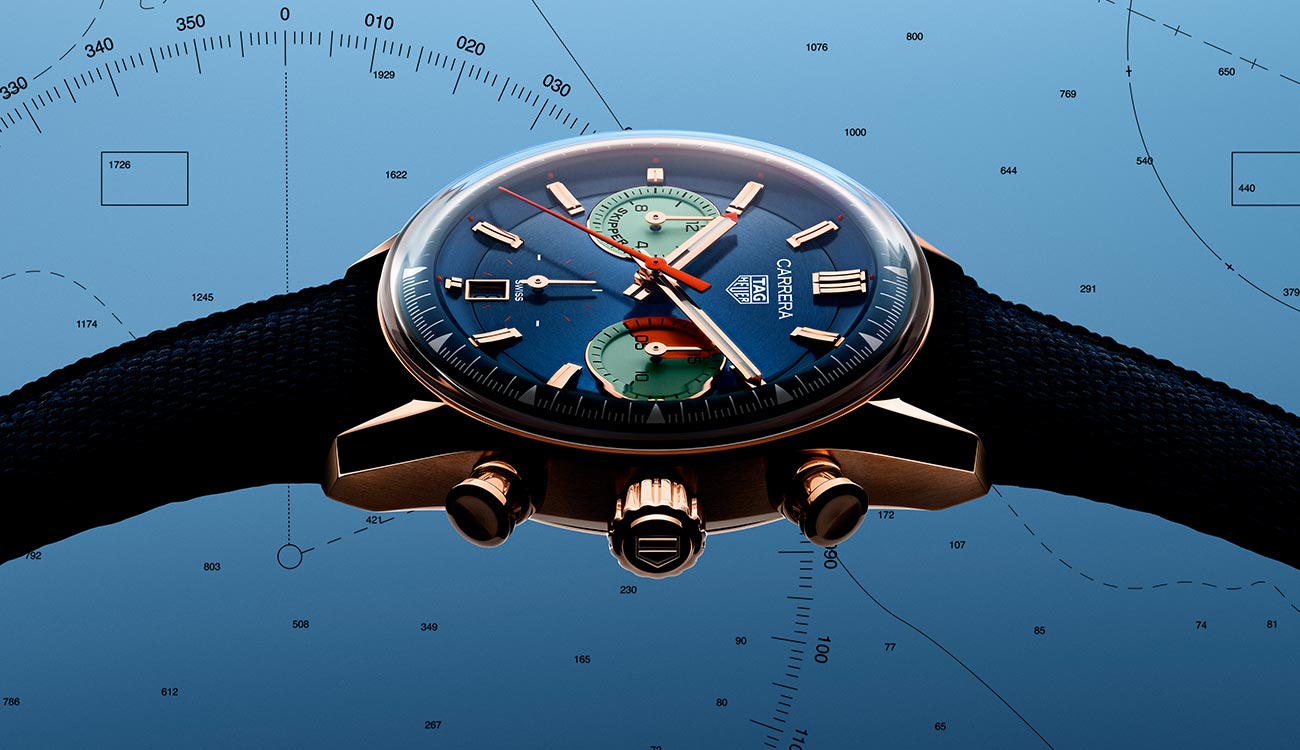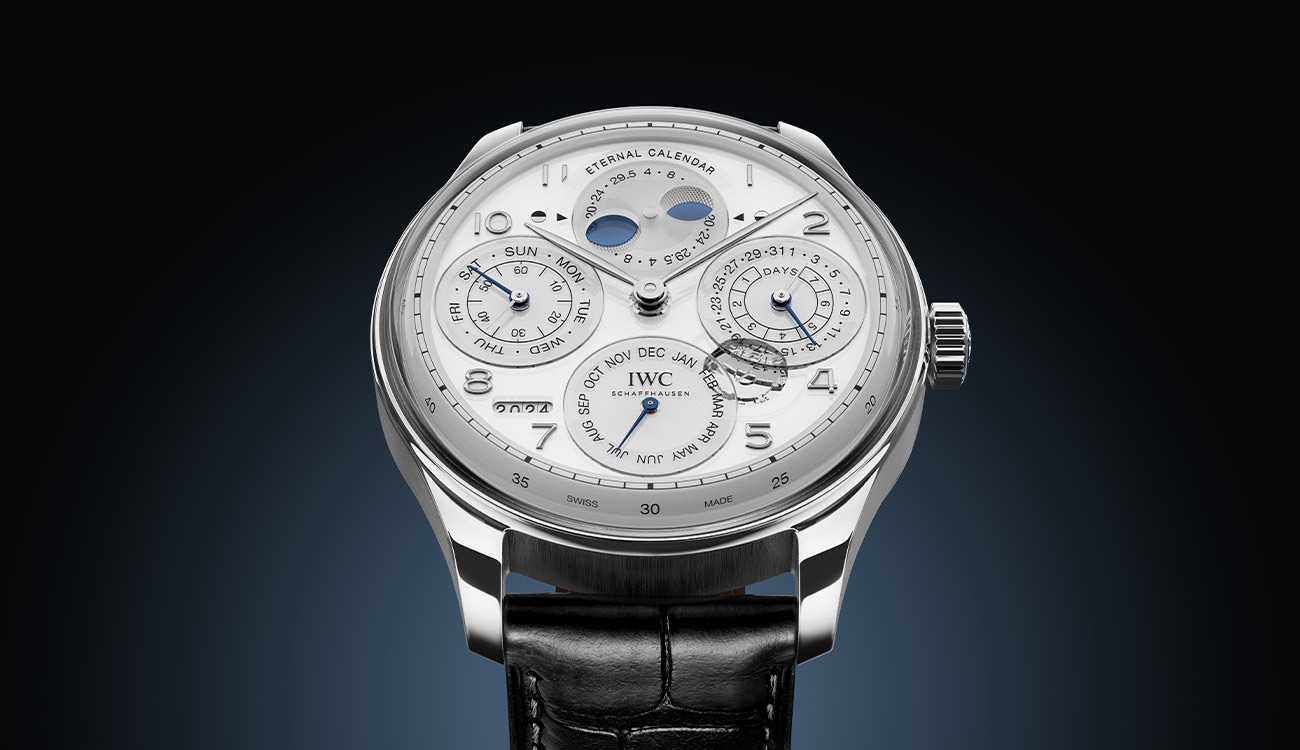- Sale
-
Brands A-Z
FeaturedBrands A-Z
-
Rolex
FeaturedBy Collection
- Rolex Certified Pre-Owned
- Patek Philippe
-
Mens
By TypePopular StylesBy EditPopular Brands
-
Ladies
By TypePopular StylesBy EditPopular Brands
-
Pre-Owned
By TypePopular Brands
-
Sell Your Watch
Sell your watchWe will expertly assess your watch and offer you
a competitive and accurate valuation for the
watch you wish to sell to us.Free Instant Valuation
Drop off at any Showroom
Unrivalled Knowledge & Expertise- Calibre - Watch News & Stories
- Calibre - Watch News & Stories
- Shop by Category
- Sale
-
Brands A-Z
- Back
- View All Brands
-
Brands
- Arnold & Son
- BALL
- Bamford
- Baume & Mercier
- Bell & Ross
- Blancpain
- BOVET
- Breguet
- Breitling
- Bremont
- BVLGARI
- Cartier
- Certina
- CHANEL
- Chopard
- Czapek
- DOXA
- Frederique Constant
- Garmin
- Gerald Charles
- Girard-Perregaux
- Glashütte Original
- Grand Seiko
- Gucci
- Hamilton
- H. Moser & Cie.
- Hublot
- ID Genève
- IKEPOD
- IWC Schaffhausen
- Jacob & Co
- Jaeger-LeCoultre
- Shop The Collection
- Kross Studio
- Longines
- Louis Erard
- Maurice Lacroix
- MB&F
- Montblanc
- Nivada Grenchen
- NOMOS Glashütte
- NORQAIN
- OMEGA
- Oris
- Panerai
- Parmigiani Fleurier
- Patek Philippe
- Piaget
- QLOCKTWO
- Rado
- RAYMOND WEIL
- Rolex
- Rolex Certified Pre-Owned
- Seiko
- Speake-Marin
- TAG Heuer
- Tissot
- TUDOR
- Ulysse Nardin
- Vacheron Constantin
- William Wood Watches
- WOLF
- ZENITH
- Rolex
- Rolex Certified Pre-Owned
- Patek Philippe
- Mens
- Ladies
-
Pre-Owned
- Back
- Shop All Pre-Owned
- Pre-Owned Home
- By Category
-
By Brand
- Certified Pre-Owned Rolex
- Pre-Owned Patek Philippe
- Pre-Owned Cartier
- Pre-Owned OMEGA
- Pre-Owned Breitling
- Pre-Owned TAG Heuer
- Pre-Owned TUDOR
- Pre-Owned Jaeger-LeCoultre
- Pre-Owned IWC Schaffhausen
- Pre-Owned Blancpain
- Pre-Owned Breguet
- Pre-Owned Chopard
- Pre-Owned Panerai
- Pre-Owned Rado
- Pre-Owned Vacheron Constantin
- Pre-Owned ZENITH
- Shop All Pre-Owned
- Sell Your Watch
- Calibre - Watch News & Stories
- My Account
- Wishlist
- Store Finder
- Book an Appointment
- Help & Support
Dubai Watch Week is re-writing the rule book on watch fairs
By Robin Swithinbank | 3 minute read
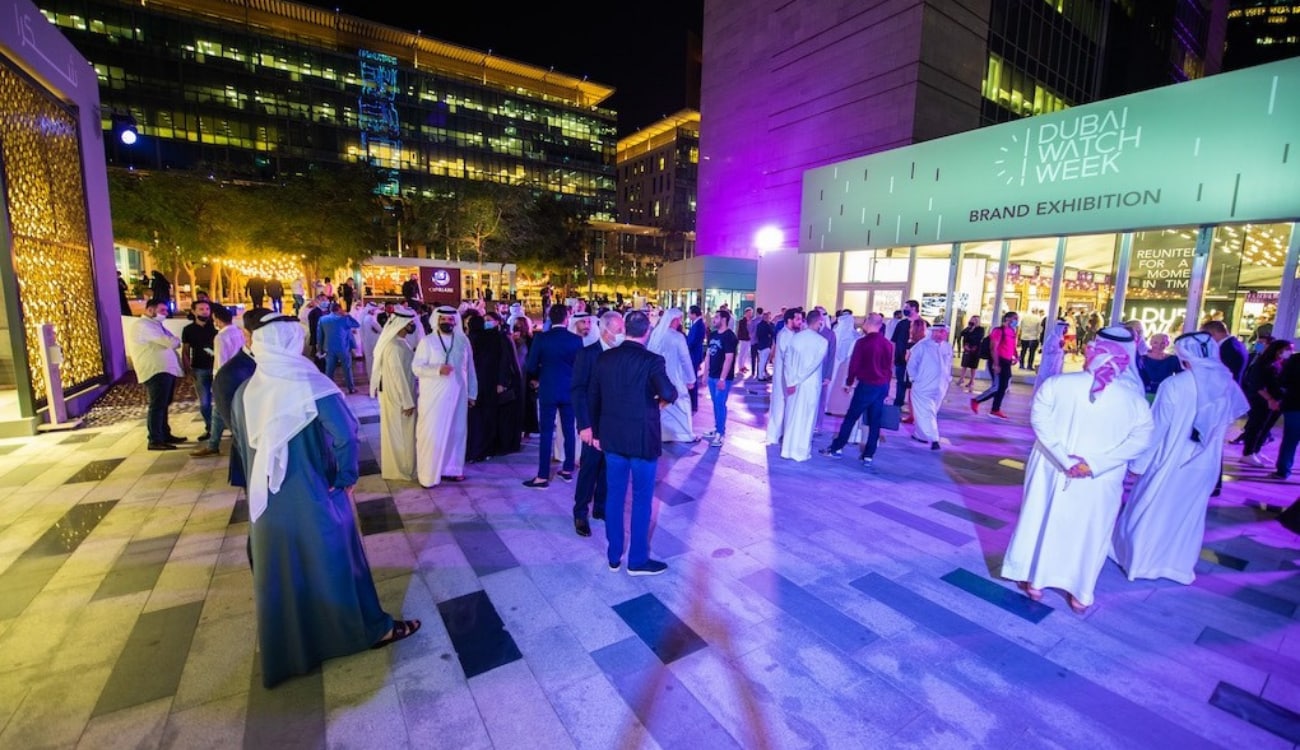
Closing out a year in which the once mighty, now sadly depleted Baselworld was forced to postpone and the new-look Watches & Wonders went ‘digital only’, it fell to last month’s Dubai Watch Week to fan the flames of horological passion with five days of in-person panels, masterclasses, and special exhibition – as well as a watch launch or two.
More than 40 brands assembled at the Gate in Dubai’s International Finance Centre for the fifth (biennial) edition of the Middle East’s premier watch event, including the headliners Rolex, Audemars Piguet and Hublot, although not all brought new watches with them. Of those that did, Girard-Perregaux had the lion’s share, revealing a suite of new pieces to close off its 230th anniversary, including a stunning wristwatch inspired by its 1889 La Esmerelda Tourbillon pocket watch, and a pair of enamel-dialled steel Laureatos dubbed the ‘Eternity’ editions.
Oris wasn’t far behind with a pairing of its own. First was a stylish, colourful revamp of its Rectangular collection (the blue and Bordeaux variants are simply terrific), but the hero was the Big Crown Pointer Date Calibre 403. Back in the summer, Oris created a limited-edition version of its signature design powered by its new in-house automatic, but at just 250 pieces, it left Oris fans wondering when the brand would introduce a collection piece.
Now it has. As with Oris’s other Calibre 400 Series watches, this humble-looking piece packs a five-day power reserve, the sort of antimagnetic properties that should mean it’s never magnetised during ‘normal’ use, and a 10-year warranty. For a watch costing £2,600, that’s highly impressive.
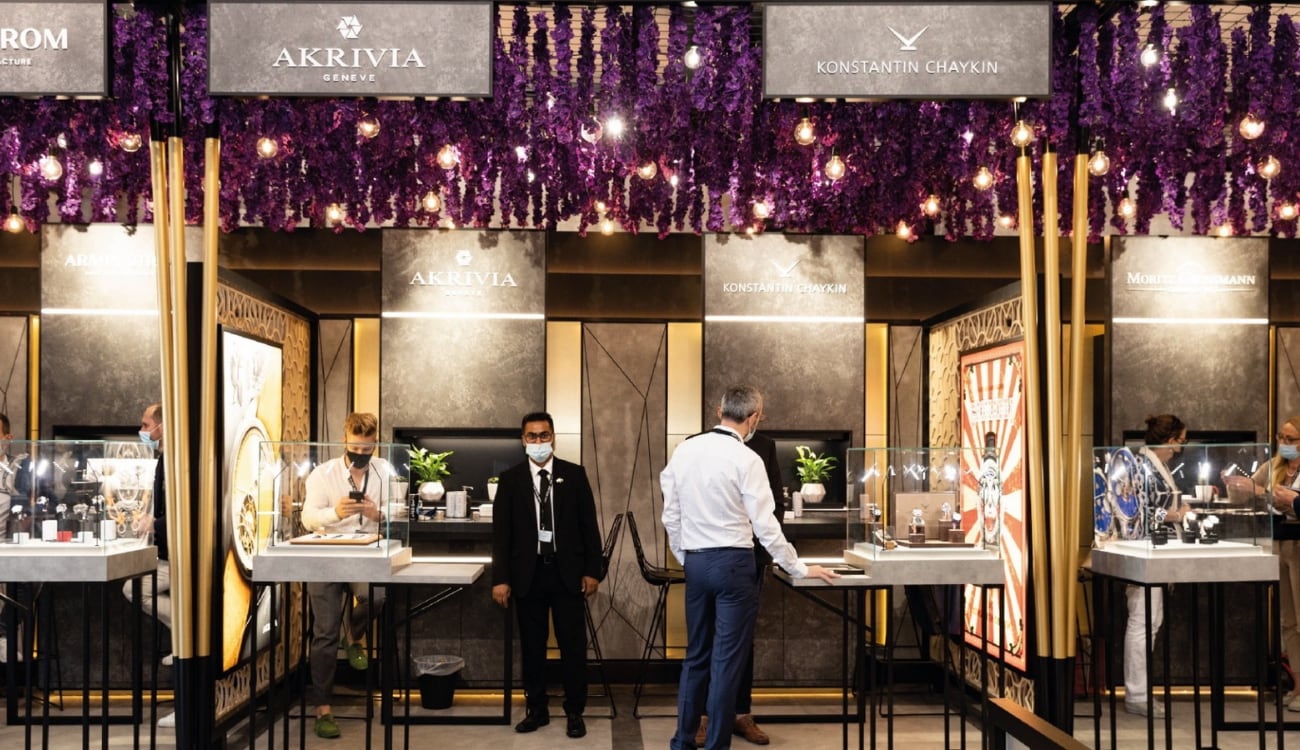
Sticking with newness, H. Moser & Cie.’s Heritage Bronze ‘Since 1828’ Limited Edition returned the brand to its Russian roots with a dial carrying a version of the company’s logo written in Cyrillic, while high-end independent watchmaker Greubel Forsey signalled its intentions to grow its story with the Balancier S2, a 46.5mm titanium piece that sits at the lower end of its price spectrum (although it will still come in at around £165,000). Ulysse Nardin was in a fresh mood too, adding another version of its fine-watchmaking dive watch, the Diver X Skeleton Black, this time with a bezel made of a carbon-fibre material called ‘Carbonium’ and punchy yellow accents.
Dubai Watch Week isn’t really about new watches, though. It’s about conversations, sharing ideas and celebrating watchmaking. Panels devoted to subject matters as diverse as sustainability, cryptocurrency and the art of collecting were welcome (and now on YouTube), and cast light on where the industry is heading.
All told, some 15,000 people visited Dubai Watch Week this year. That’s up from 9,000 two years ago and no small achievement given the effects of the pandemic, but still small by watch fair standards (at its peak Baselworld attracted more than 100,000). But what it showed was that regional, less formal, more conversational fairs taking place around the world are the future. In a globalised world where people are increasingly thinking locally, the model makes sense, after all. Long live the – regional – watch fair!
Robin Swithinbank is an independent journalist and former Calibre editor. He is a regular contributor to The New York Times International, Financial Times, GQ, Hodinkee and Robb Report.
Sign Up For Calibre Newsletter
Get a round up of the latest stories from Calibre every month, directly to your inbox.
© 2025 Watches of Switzerland
Watches of Switzerland is a trading name of Watches of Switzerland Company Limited. Registered Office: Aurum House, 2 Elland Road, Braunstone, Leicester, LE3 1TT, Registered in England and Wales, Company number 00146087. Registered VAT Number 834 8634 04. Watches of Switzerland Company Limited acts as a broker and not a lender and offers finance from Secure Trust Bank PLC trading as V12 Retail Finance and PayPal UK Ltd, 5 Fleet Place, London, United Kingdom, EC4M 7RD trading as PayPal Credit. Watches of Switzerland Company Limited is authorised and regulated by the Finance Conduct Authority. Our registration number is 308710. *Credit is provided subject to affordability, age and status. Minimum spend applies. Terms and Conditions apply. UK residents only. Not all products are regulated by the Financial Conduct Authority and FOS protection will not be extended to unregulated agreements. Please note the Consumer Credit Act states that should your purchase / loan amount cost more than £30,000 you will not be covered under Section 75 of the Consumer Credit Act.
*Next day delivery available on most items. See product pages for more information.

